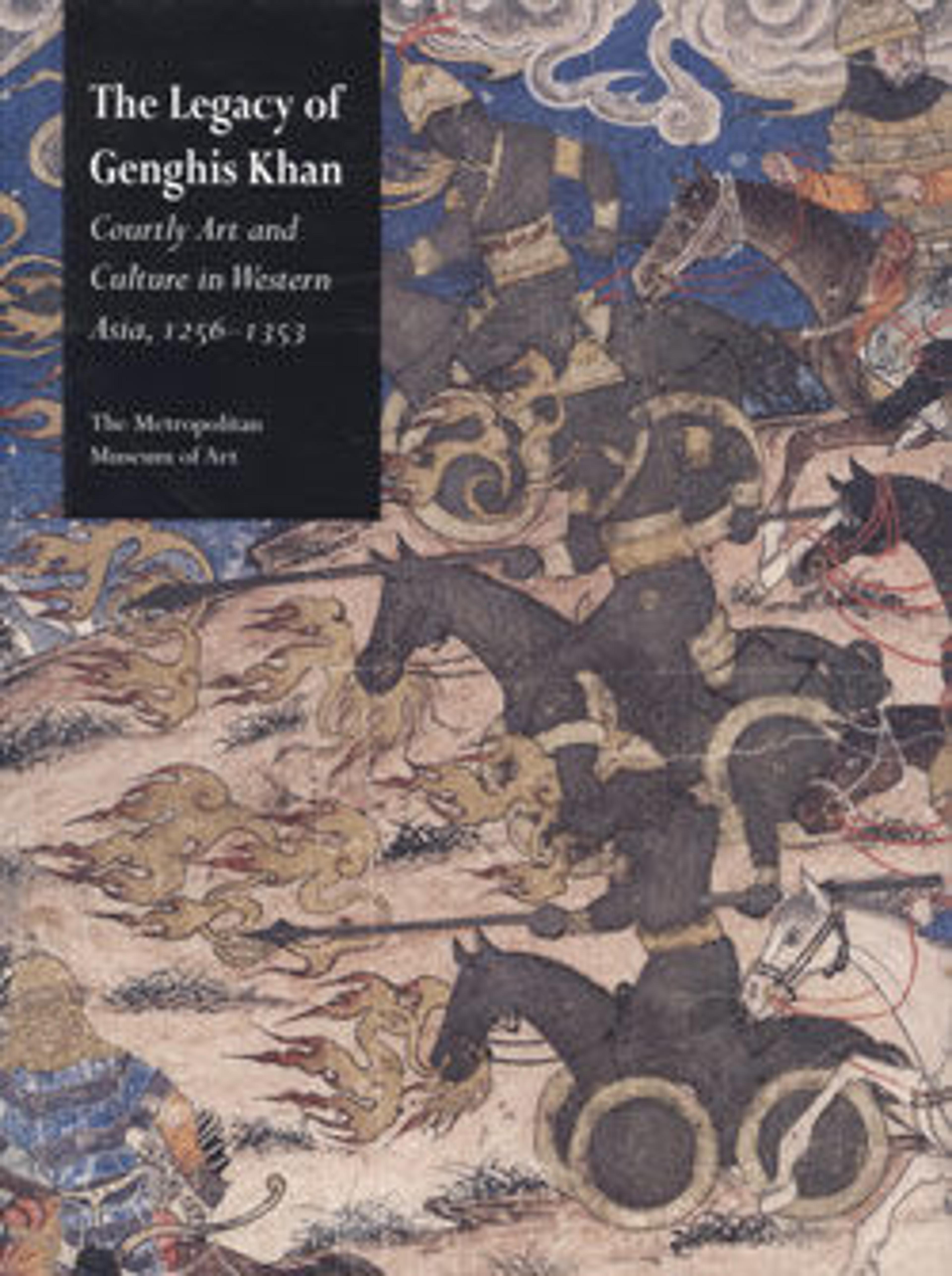"Gushtasp Slays the Rhino-Wolf", Folio from a Shahnama (Book of Kings)
Gushtasp volunteered to go to the forest to slay a horned wolf as large as an elephant. The hero's steed was ripped apart by the monster's horn, and Gushtasp, on foot, dispatched the rhino-wolf with his sword. The prominent mountainous setting has a close parallel in the frontispiece of a poetic anthology compiled in Isfahan and in the painting style of southern Iran.
Artwork Details
- Title: "Gushtasp Slays the Rhino-Wolf", Folio from a Shahnama (Book of Kings)
- Author: Abu'l Qasim Firdausi (Iranian, Paj ca. 940/41–1020 Tus)
- Date: ca. 1330–40
- Geography: Attributed to Iran, probably Isfahan
- Medium: Ink, opaque watercolor, gold, and silver on paper
- Dimensions: Painting: H. 1 3/4 in. (4.4 cm)
W. 4 5/16 in. (10.9 cm)
Page: H. 8 1/16 in. (20.5 cm)
W. 5 5/16 in. (13.5 cm)
Mat: H. 19 1/4 in. (48.9 cm)
W. 14 1/4 in. (36.2 cm) - Classification: Codices
- Credit Line: Bequest of Monroe C. Gutman, 1974
- Object Number: 1974.290.23
- Curatorial Department: Islamic Art
More Artwork
Research Resources
The Met provides unparalleled resources for research and welcomes an international community of students and scholars. The Met's Open Access API is where creators and researchers can connect to the The Met collection. Open Access data and public domain images are available for unrestricted commercial and noncommercial use without permission or fee.
To request images under copyright and other restrictions, please use this Image Request form.
Feedback
We continue to research and examine historical and cultural context for objects in The Met collection. If you have comments or questions about this object record, please contact us using the form below. The Museum looks forward to receiving your comments.
